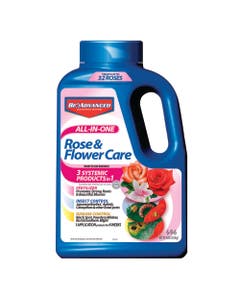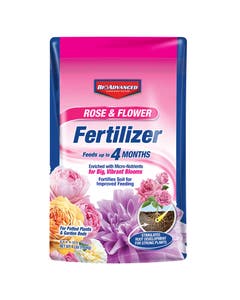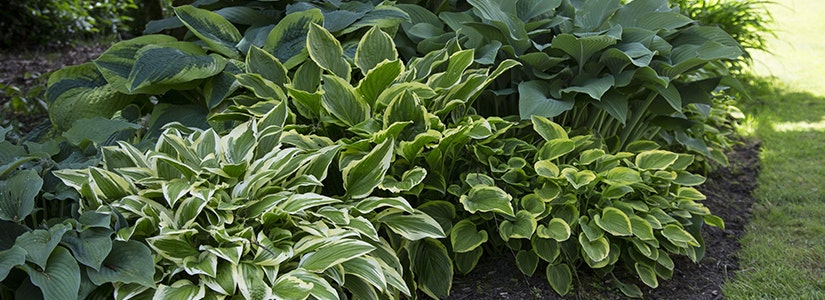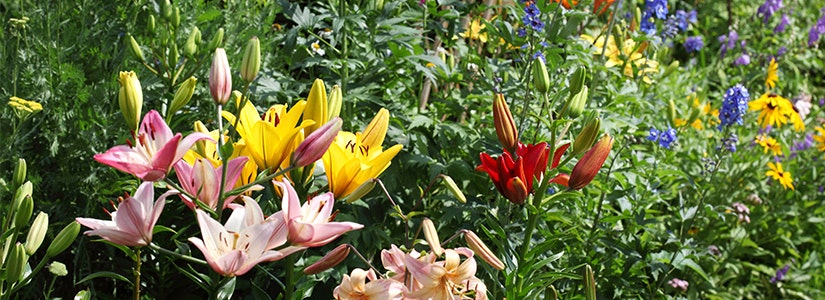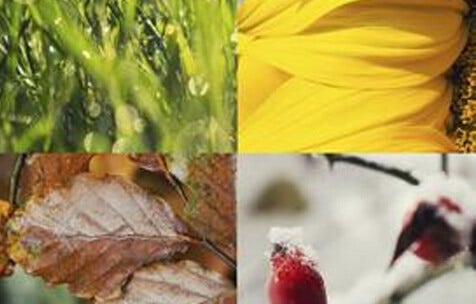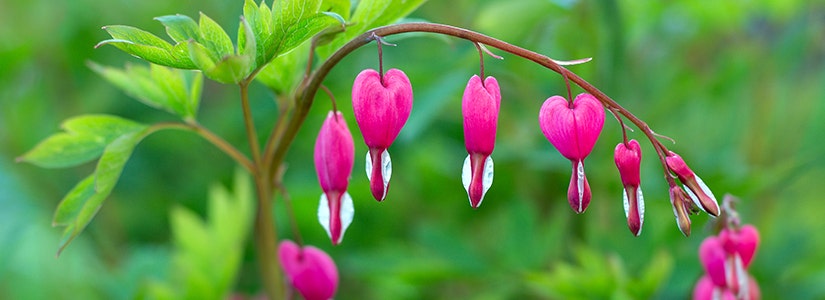

- Home
- Solution Center
- Learn
- Rose & Flower
- Growing Perennials: 6 Bare-Root Beauties
Growing Perennials: 6 Bare-Root Beauties
Bare-root perennials offer several advantages to gardeners. These plants provide an affordable option for stocking a garden with perennial color. They also trim the plant budget for gardeners needing to fill a large area.
As you shop for bare-root perennials, you'll discover a larger variety of plants than what you might find in pots. Mail-order, bare-root nurseries boast an even broader plant selection, including unusual varieties of common perennials, such as Day Lilies or Hostas, as well as less-familiar perennials, such as Echinops or Bottle Gentian.
If you're not sure which bare-root perennial to start with, check out these eye-catching classics. They'll give your garden a fresh look and reward you with many seasons of beauty.

Astilbe (Astilbe spp.)
Count on Astilbe to add sparkling color to shady settings. Flowers unfurl in a plume-like form, standing on sturdy stems above ferny foliage. Look for types that blossom at different times throughout the summer. Astilbe demands moist soil. Mix organic matter into soil prior to planting to improve its ability to hold moisture. Dry soil yields crispy, brown leaves.
- Size: Foliage is 6-36 inches high; flowers add another 12-24 inches to height; 12-24 inches wide
- Hardiness: USDA Zones 4-8
- Landscape Use: Shade plantings, ground cover, stream or pond-side planting
- Tolerates: Dense shade, deer, rabbits, black walnuts
- Perennial Planting Partners: Golden Hakone Grass, Hosta, Ferns, Foxglove

Bearded German Iris (Iris germanica)
Large, often fragrant blossoms stand tall above spiky, blue-green leaves in early summer. Some varieties rebloom again in late summer to fall. Look for flowers in nearly every hue, including black, gold, burgundy and classic purple shades. Grow extra to cut blooms for bouquets.
- Size: 8-36 inches high and 12-24 inches wide
- Hardiness: USDA Zones 3-10
- Landscape Use: Mass plantings, cottage garden; try dwarf types for edging patios or paths
- Tolerates: Drought (once plants are established), deer
- Perennial Planting Partners: Lady's Mantle, Catmint, Black-Eyed Susan

Bleeding Heart (Dicentra spectabilis)
Dangling heart-shaped blooms dance along stems of this shade-loving perennial during spring to early summer. The leaves have a divided appearance and enhance the plant's elegant beauty. Bleeding Heart tends to die back and disappear as summer heat arrives, so choose planting partners carefully. Pair this romantic favorite with perennials that will grow up around it as summer unfurls.
- Size: 24-36 inches high and wide
- Hardiness: USDA Zones 2-8
- Landscape Use: Shade gardens
- Tolerates: Deep shade, rabbits, black walnuts
- Perennial Planting Partners: Variegated Solomon's Seal, Ferns, Siberian Bugloss, Hosta

False Indigo (Baptisia australis)
A prairie native, False Indigo opens blue blooms in late spring to early summer. Leaves have a pleasing blue tone as well. This is a tap-rooted perennial, which means you should choose the planting site carefully because it's tough to transplant. Plants are slow to awaken in spring, so mark the spot to avoid accidentally damaging the crown.
- Size: 36-48 inches high and wide
- Hardiness: USDA Zones 3-9
- Landscape Use: Cottage gardens, erosion control, native plant gardens
- Tolerates: Drought, deer, clay or rocky soil, rabbits
- Perennial Planting Partners: Liatris, Purple Coneflower, Showy Autumn Sedum

Penstemon (Penstemon spp.)
A North American native, Penstemon is a hummingbird magnet with flower spikes that appear in late spring to summer. Different types hail from several regions of the country – the East, Southeast and Desert Southwest. Some types prefer fertile, humus soil; others need dry, fast-draining soil. Local garden centers should have the Penstemon that will grow best in your region. Discover more penstemon species through mail-order companies.
- Size: 12-30 inches high and 12-24 inches wide, depending on type
- Hardiness: USDA Zones 2-10
- Landscape Use: Wildflower plantings, rain gardens, butterfly gardens
- Tolerates: Drought, poor soil, rabbits, deer
- Perennial Planting Partners: For desert native – Ornamental Grass, Lavender, Russian Sage; for Southern and Eastern native – Artemisia, May Knight Salvia, Cranesbill Geranium

Tall Garden Phlox (Phlox paniculata)
Welcome butterflies with the lush flower-heads of Tall Garden Phlox. Sweetly fragrant blooms open from mid-to late summer in many hues, including white, red, pink, lavender and bicolor blends. For best performance, stake the plants in spring by inserting a grow-through type support. Look for varieties that are resistant to Powdery Mildew.
- Size:12-60 inches high and 24-36 inches wide
- Hardiness: USDA Zones 3-8
- Landscape Use: Cottage gardens, butterfly gardens
- Tolerates: Clay soil, deer, black walnuts
- Perennial Planting Partners: Day Lily, Shasta Daisy, Centranthus, Fountain Grass



